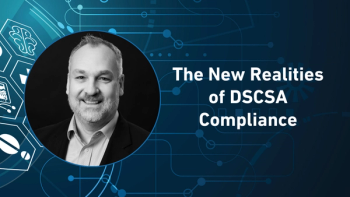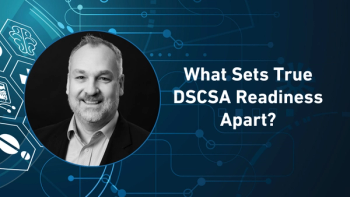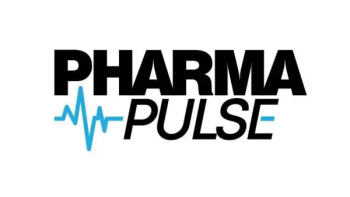
Creating a Unified Strategy to Advance Education on Counterfeit Medicines
In the second part of his Pharma Commerce video interview, Sean O’Hearen, founder and principal consultant at 1st Line Partners, explains how the private sector should strategically support and scale efforts to ensure that HCPs globally receive substandard and falsified medicine detection training.
In a video interview with Pharma Commerce, Sean O’Hearen, founder and principal consultant at 1st Line Partners, discusses the critical issue of substandard and falsified (SF) medicines and the lack of awareness among healthcare professionals (HCPs). Despite SF drugs posing a growing global health risk, only 2% of HCPs are trained to detect them, and over 80% don’t consider them a serious threat. The Johns Hopkins Bloomberg School of Public Health has recently started focusing on this issue, holding its second symposium on the topic with support from Pfizer. Their work is encouraging, signaling that academic institutions are beginning to address these systemic educational gaps.
O’Hearen notes he’s not an expert in medical or pharmacy education but emphasizes that the BESAFE report—referenced in the interview—offers actionable recommendations. These include integrating SF medicine awareness into undergraduate curricula for healthcare students, establishing dedicated modules in medical schools, and expanding continuing education for practicing professionals. In his experience, frontline education, especially at infusion centers administering life-saving treatments like oncology drugs, plays a critical role in identifying and preventing counterfeit drug use. Nurses and healthcare workers trained to detect signs of falsification are a vital line of defense.
Efforts are underway globally, with the World Health Organization and the International Pharmaceutical Federation leading collaborative projects with African universities in countries like Nigeria, Uganda, and Tanzania. These efforts aim to establish standardized, research-backed curricula to address the growing threat of SF medicines, especially in regions more vulnerable to drug fraud.
While progress is being made, O’Hearen believes the issue is still in its early stages of recognition and response. With more academic and clinical institutions like Johns Hopkins stepping up, the hope is to eventually embed SF medicine detection and awareness into formalized education systems worldwide—closing critical gaps in the healthcare supply chain and improving patient safety.
He also comments on how the private sector should support and scale these efforts to ensure that HCPs globally receive standardized training; the communication strategies stakeholders should adopt to alert without alarming, ensuring patients stay confident in genuine pharmaceuticals, while also remaining vigilant against counterfeit threats; and much more.
A transcript of his conversation with PC can be found below.
PC: Initiatives like BESAFE, the FIP & WHO Pharmacy Curriculum Guide on Substandard and Falsified Medicines, and the Partnership for Safe Medicines are cited as critical, yet underfunded. How should the private sector, including pharma manufacturers, strategically support and scale these efforts to ensure that HCPs globally receive standardized training?
O’Hearen: I think they're already doing a lot, number one, but there are so many different organizations that are working this problem. I's not only the manufacturers. You have the associations like the Pharmaceutical Security Institute (PSI) that the manufacturers are a part of. A lot of other nonprofit organizations, trade organizations, of course, regulatory authorities. You have the World Health Organization and so on. There are so many different organizations, including all of the law enforcement community.
I think there is an opportunity for an alliance of alliances-type of concept. With all these different organizations that are trying to work this problem, getting aligned on a few sort of strategic pillars, education being one of them, that we can pursue in a more harmonized way. There's a lot to consider if you're trying to get do something like that. In my experience, and especially with the bigger pharmaceutical manufacturers that I've had experience with, they all have it as part of their strategy; it’s one of their strategic pillars. They all have an element that's devoted to advocacy and awareness, and engaging with external stakeholders, the whole variety of stakeholders. They have a budget that is connected with that, and then they need to decide, how are we going to allocate these resources? Are we going to focus on policy levers, on education levers, on training of law enforcement, public awareness? What is it? What are we going to do, in addition to what it costs to be part of some of these associations, which is not inexpensive. That’s where there's not alignment.
These different organizations where I think they're applying a lot of resources externally and sometimes in a coordinated fashion, like with a PSI or an Rx-360, but I think there's an opportunity to pull more resources to focus at an even higher level, on some of these initiatives. I would put this education piece of healthcare professionals in that category, if it were me deciding on the priority.
Newsletter
Stay ahead in the life sciences industry with Pharmaceutical Commerce, the latest news, trends, and strategies in drug distribution, commercialization, and market access.





